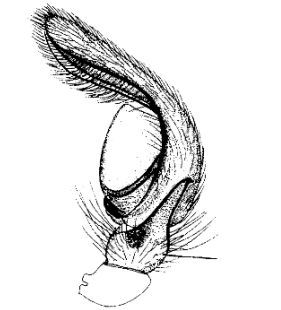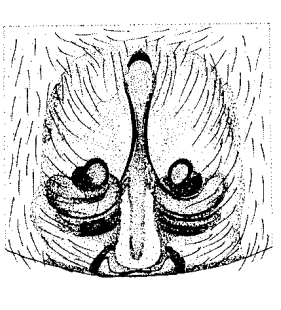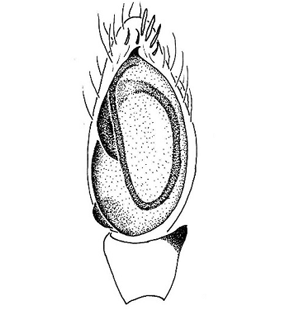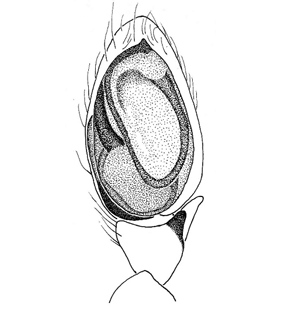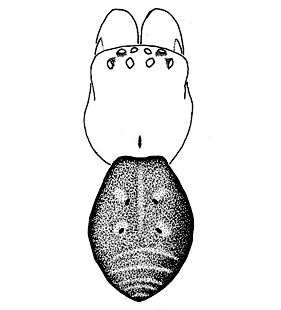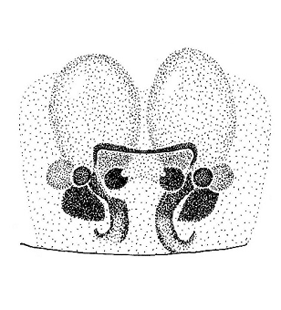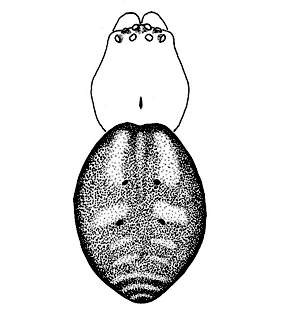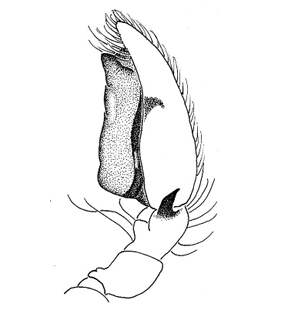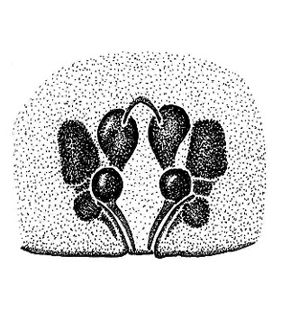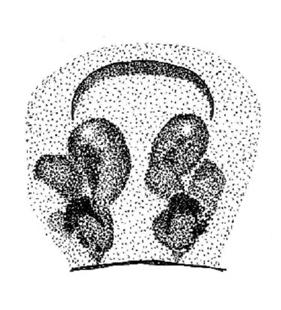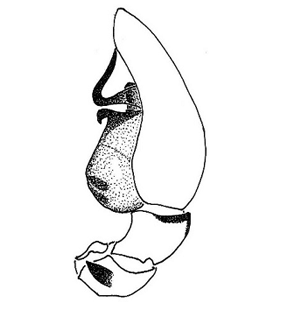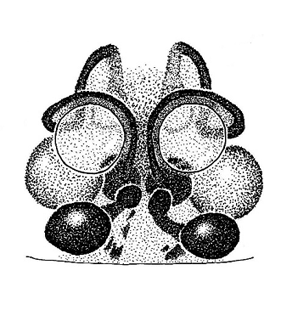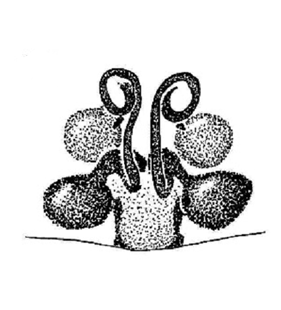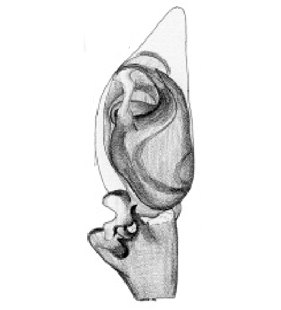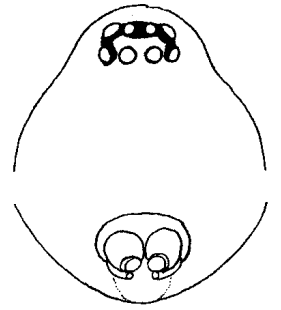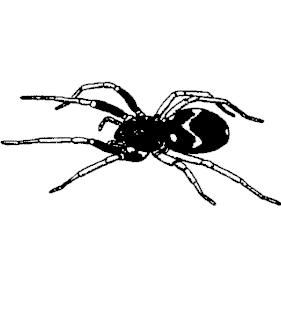Family Corinnidae Karsch, 1880
|
In case you find an error or have a specific suggestion, please follow this link: click
|
||||||||
| 1 |
Leg bristles absent, but at least the male tibia and metatarsi I-II may bear ventral-lateral rows of very short spines or thickened hairs (cusps). Prosoma most often distinctly convex, its cuticula most often distinctly wrinkled, chelicerae usually powerful |
|||||||
| - | Leg bristles present, e.g. as long paired ventral tibial and metatarsal bristles on the anterior leg, cusps absent. Prosoma usually low, powerful chelicerae only in Creugas |
|||||||
| 2 (1) |
Body length 5-7 mm, genital organs as figure, under bark Trachelidae |
| ||||||
| - | Body length less than 5 mm, genital organs different, ground spiders |
|||||||
| 3 (2) |
Male tibia and metatarsus I-II with ventral-lateral rows of very short spines or thickened hairs (cusps), male opisthosoma with dorsal scutum, epigyne different |
|||||||
| - | Male tibia and metatarsus I-II without cusps, male opisthosoma without dorsal scutum, epigyne as figure Trachelidae |
|||||||
| 4 (3) |
Patellar apophysis of the male pedipalpus absent, epigyne with anterior hood or rim Trachelidae |
| ||||||
| - | Patellar apophysis of the male pedipalpus present, epigyne without anterior hood or rim Trachelidae |
| ||||||
| 5 (1) |
Body length 5 – 8.6 mm, metatarsi I-II bear 2 pairs of ventral bristles |
|||||||
| - | Body length 2 – 5 mm, metatarsi I-II bear at least 3 pairs of ventral bristles |
|||||||
| 6 (5) |
Tibia I with 5 pairs of ventral bristles, legs III-IV with numerous bristles, body stout, prosoma 1.23-1.34 times longer than wide, male pedipalpus tibia with 3 apophyses, epigyne with 2 depressions |
| ||||||
| - | Tibia I with 2 pairs of ventral bristles, legs III-IV with no or very few bristles, body slender, prosoma 1.34-1.48 times longer than wide, male pedipalpus tibia without apophyses, only with a hook, epigyne as figure |
|||||||
| 7 (5) |
Ant-mimicking spiders, dark opisthosoma with white spots, femur of male pedipalpus with ventral hump |
|||||||
| - | Not ant-shaped, femur of male pedipalpus without ventral hump |
|||||||
| 8 (7) |
All femora with 1 dorso-basal bristle , 2-4 promarginal and 2 retromarginal teeth on the cheliceral fang furrow |
|||||||
| - | Dorso-basal bristle at least absent on femora III-IV, no promarginal and 1 retromarginal teeth on the cheliceral fang furrow Phrurolithidae |
| ||||||
| 9 (8) |
Two tibial apophyses at the male pedipalpus, one short, epigyne with large depressions as figure Phrurolithidae |
| ||||||
| - | One long and slender tibial apophysis at the male pedipalpus, epigyne as figure Phrurolithidae |
|||||||
| 10 (7) |
Body length 2-4 mm, chelicerae without anterior bristle in its basal half, prosoma and opisthosoma unicoloured, prosoma reddish (fading to orange in alcohol), opisthosoma long oval (Note: Arabelia is currently considered to belong to Liocranidae but could turn out to belong to Corinnidae)
|
|||||||
| - | Body length less than 2 mm, chelicerae with anterior bristle in its basal half, prosoma and opisthosoma bicoloured (light and darker grey), opisthosoma short ovoid Phrurolithidae |
|
Further genera
- 1. Corinna
- 2. Falconina
- 3. Graptartia
- 4. Procopius
- 5. Scorteccia
- 6. Simonestus
